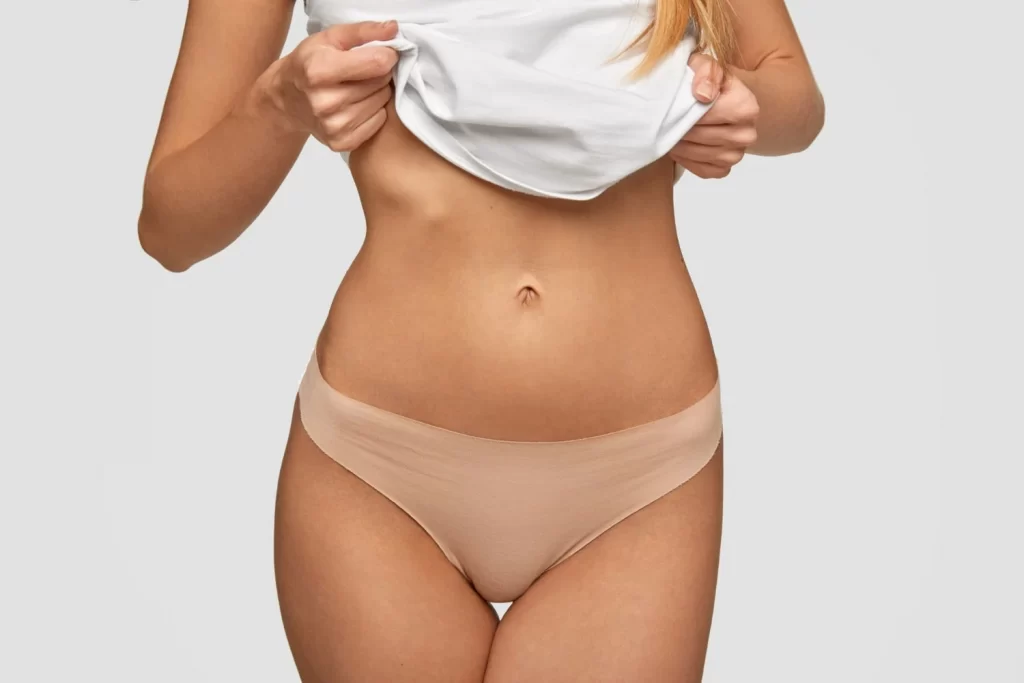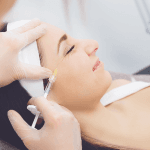A tummy tuck may drastically improve the appearance of your midsection by removing excess skin and abdominal tissue and tightening weak stomach muscles. However, one concern you may have about this surgery is how your belly button will look post-operation.
A “weird-looking” belly button can be unsettling, especially when you’ve just gone through an extensive procedure. That’s why the team at Northwest Face & Body wants you to be informed so you know what is and isn’t a normal part of the tummy tuck healing process. We can also guide you through what to do if your tummy tuck belly button isn’t turning out exactly as you hoped.
Why Does the Belly Button Sometimes Look “Weird”?
After a tummy tuck, also known as abdominoplasty, your belly button’s appearance may change for several reasons. When surgeons remove and tighten the excess skin around your abdomen, they may need to reposition your belly button. As a result, the surrounding skin and tissues may sit differently, making the belly button appear slightly off, swollen, or even temporarily distorted during the initial healing phase.
Post-surgical swelling can also cause your belly button to look larger or smaller than expected, and scar tissue may form as your body mends. Over the course of several weeks (and sometimes months), you may notice your belly button’s appearance becoming more natural.
Normal Healing Vs. Potential Complications
It’s good to know the difference between normal healing and signs of potential complications. Minor swelling, redness, and crusting around the belly button are common and usually fade as you follow your surgeon’s post-operative care instructions.
Occasionally, though, you could experience symptoms that need immediate attention, including:
- Excessive Pain or Redness: While mild discomfort is normal, severe pain or red streaks around the incision area can indicate an infection.
- Foul-Smelling Discharge: Any unusual discharge, especially with an unpleasant odor, should be examined by your surgeon.
- Persistent Bleeding: Small amounts of dried blood can be normal, but continued bleeding needs to be checked promptly.
If you notice any of these symptoms, contact your surgeon as soon as possible.
Steps To Encourage A Better-Looking Belly Button
If you’re concerned that your belly button looks odd, there are several things you can do to promote healing and help it take on a more natural appearance over time:
- Follow Post-Operative Instructions: Your surgeon will provide you with specific care guidelines, including how to clean and bandage the incision site. Proper wound care can reduce the risk of infection and unnecessary scarring, which may impact the look of your belly button.
- Wear Compression Garments: A compression garment can help manage swelling and support your new abdominal contours as they settle into place.
- Avoid Strenuous Activities Too Soon: Give your body time to heal. Jumping back into your regular workout routine or lifting heavy objects can stress your incisions and affect your belly button’s final appearance.
- Stay Hydrated and Eat Nutrient-Rich Foods: Proper nutrition and hydration can help your body’s natural healing processes, which will also support better scar healing.
- Monitor Your Scars: Keep track of any changes in color, size, or shape around the incision. If you notice something unusual, don’t hesitate to call your surgeon.
Non-Surgical Options For Belly Button Refinement
If your belly button still looks off after the initial healing period, you may have non-surgical options to alter its appearance:
- Steroid Injections: Can help flatten and soften scars if excessive scar tissue forms around the belly button.
- Laser Treatments: May reduce the visibility of scars or help even out skin tone around the area.
- Microneedling or Other Skin Rejuvenation Techniques: Could assist in textural improvements if the scar or skin around the belly button feels uneven.
Talk to your surgeon and discuss what treatments are most suitable for your situation.
When To Consider Revision Surgery
In some cases, revision surgery might be the best way to address a belly button that looks distorted after the initial healing process. Revision surgery is generally less extensive than the original tummy tuck, focusing primarily on adjusting the belly button’s shape or position.
Your surgeon can help you decide if this is the path for you, but you’ll need to wait until you’ve fully healed from your initial procedure, which can take anywhere from six months to a year post-op.
Post-Tummy Tuck Belly Button Repair Advice From Northwest Face & Body
It’s completely normal to feel concerned if your belly button doesn’t immediately look the way you envisioned after your tummy tuck. Healing is a journey. You will likely see swelling, tissue changes, and the gradual refinement of scar tissue over time.
Steps like following your surgeon’s guidance, taking care of your body, and keeping realistic expectations can significantly improve the final look of your belly button and your entire abdomen.
If you have any worries or simply want expert advice, the team at Northwest Face & Body is here to help. With years of experience in body contouring procedures and a patient-focused approach, we aim to help you feel confident and informed every step of the way.
Schedule your consultation online today!






